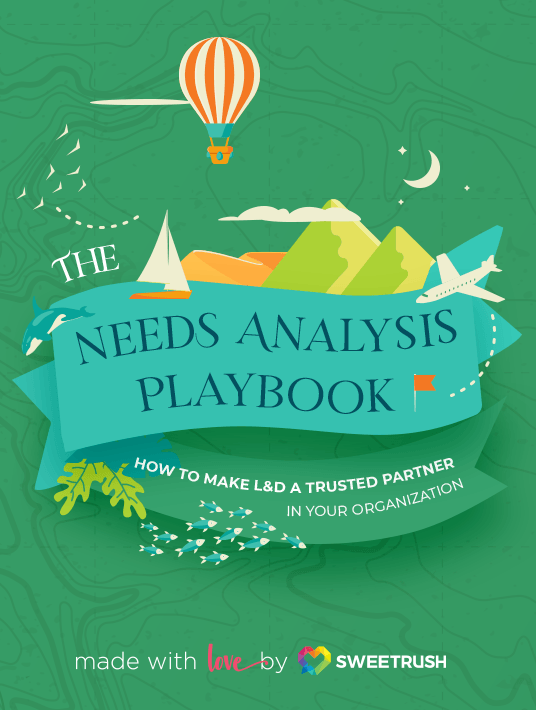A Needs Analysis Guide To Shift Performance And Enrich eLearning Experiences
The conundrum that many organizations face is whether to invest in needs analysis or skip right to development. After all, identifying gaps and realigning objectives takes time, organization, and planning. The truth is that it creates a solid framework for your L&D initiatives moving forward so that you target pain points instead of just brushing the surface of employee development. This needs analysis guide is designed to help you analyze stakeholders and get buy-in using a step-by-step methodology. Before we dive into the content, let's look at why needs analysis is imperative for modern organizations.

Why Needs Analysis Is So Essential For Long-Term Business Growth
Should your organization conduct a needs analysis even if that means extending your implementation timeline? Does it really impact the final result? Here are just a few reasons why every business should kick things off with a thorough needs assessment and schedule frequent TNA check-ups:
Clarify Business Expectations And Requirements
Rapid business expansion often leads to growing pains. For example, your objectives and goals no longer align with desired outcomes. However, even startups and SMBs must evaluate their expectations and business requirements periodically. An in-depth training needs analysis gives you the opportunity to assess where your organization is now versus where it needs to be. This pertains to every aspect of operations, from employee performance to customer satisfaction stats. You can also gauge learner and stakeholder expectations regarding L&D initiatives and ongoing support.
Improve Employee Engagement And Motivation
Your online training program might be missing the mark, which has a direct impact on employee participation. Simply put, your learner audience cannot form an emotional connection or the content isn't personalized to suit their needs. As a result, they mentally disengage and are less likely to access the training library or sign up for courses. A needs analysis allows you to gather feedback and assess online training metrics to pinpoint areas for improvement. For instance, surveys reveal that employees aren't getting enough real-world application or skill-building tools. Then you can create a plan of action that's based on practical use cases to boost participation rates.
Address Emerging Gaps Head-On
Some skill, performance, and knowledge gaps are still on the horizon. They may not pose an immediate problem for your organization, but you still need to keep them on your L&D radar. Needs analysis helps you address these emerging gaps before they become a widespread issue. For example, you can be proactive about communication skill gaps that might negatively impact your customer service and sales in the long run. You're also able to plan ahead for business expansion. Let's say that you're venturing into new markets. Before you onboard new staffers, you must ensure that your current talent pool brings its "A" game. Thus, needs analysis allows you to zero in on potential roadblocks and eliminate them before recruiting commences.
Get Employees Actively Involved In The L&D Process
The last thing you want is for employees to feel like outsiders. While many organizations focus on getting employee buy-in so that they become loyal brand advocates, L&D is also a crucial factor. Every member of the team should feel like they're part of the process early on. Needs analysis is a great way to get them actively involved from day one. You encourage them to share their thoughts and opinions about your business strategy and L&D programs. In turn, their voices are being heard and they aren't simply sitting on the sidelines. Another benefit is giving them a sense of ownership.
Increase Training ROI
Effective resource allocation is what sets successful organizations apart from the rest. These companies know how to evaluate their assets and stretch them to achieve the best outcomes, and needs analysis is the first step. You must be able to identify underperforming activities, courses, and support tools to shift your L&D focus. Then again, the culprit might be overlooked gaps that affect your profit margins and employee performance. As an example, your current online training program centers on specific skillsets or competencies that are no longer required. Taking a closer look at where you invest time and money can help you improve ROI and adjust course.
About This Needs Analysis Guide
While it's often a cathartic process, every organization can benefit from self-assessment. This needs analysis playbook explores every aspect of the process from multiple viewpoints, including stakeholders and online learners. Here's a brief glimpse of what's inside:
- Stakeholder Analysis: 6 Crucial Questions To Help You Uncover Business Needs
- The Learner Audience: How To Gather Feedback To Continually Improve The Learning Experience
- Constraints: Learn How To Identify Potential Risks And Devise Innovative Solutions
- The Needs Analysis Report: Tips To Prep Your Report And Achieve Stakeholder Buy-in
These insights can be used for every sector and business model. If you're looking for innovative ways to elevate your L&D program and empower employees, this is the eBook for you!
Conclusion
Needs analysis shouldn't be viewed as an unnecessary expense, but a cost-effective way to clarify objectives and bring your business to the next level. Taking the "out of sight, out of mind" approach leads to business stagnation. Organizations must deep-dive into their current goals, objectives, expectations, and strategies to make the most of internal talent. But where do you begin and which tools are available? Which metrics should you consider and who are your most valuable sources of direct information?
Download the eBook The Needs Analysis Playbook: How To Make L&D A Trusted Partner In Your Organization to learn how to shift your L&D perspectives and get employee buy-in. This ultimate needs analysis guide can help you mitigate risks and make L&D an ally in your long-term business strategy.







